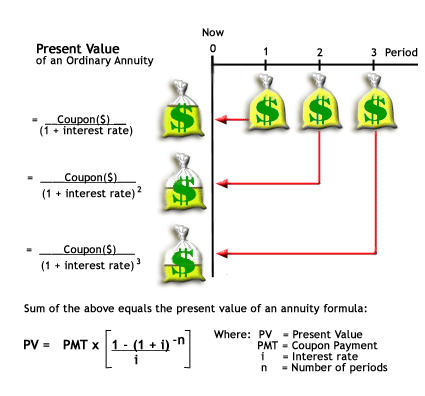How To Value An Internet Stock
Post on: 19 Июль, 2015 No Comment

Follow Comments Following Comments Unfollow Comments
An academic study, published several years after the peak of the dot-com bubble, accurately described just how whacky internet valuations grew until the bubble burst. The study’s first sentence basically stated that valuations lost touch with reality. During the internet frenzy, there was mention of “new economy” stock references to new valuation zones that should be considered reasonable. At the time, valuation metrics included measures such as customers per click, measuring “eyeballs” or time spent visiting a website.
Most of the baseless new economic metrics have thankfully vanished, and the internet industry has matured greatly since the height of the bubble. Many firms have survived, and quite a few have developed into market leaders with bona fide business models. Below is a more grounded overview of how to properly value an internet stock, including those closer to the start-up stage.
A Durable Internet Valuation Approach
Many firms that survived the dot-com bubble have since developed sustainable business models. Companies in this category include Cisco, Amazon, Priceline and even Pets.com. The quick answer to valuing these types of firms is to combine traditional valuation metrics with those more specific to the industry.
The three primary valuation methodologies include a discounted cash flow, or DCF analysis consisting of estimating a firm’s future cash flows and discounting them back to the present for a current value estimate. The comparables approach consists of using comparable companies and calculating comparable multiples, such as enterprise value to sales (EV/S), price to earnings (P/E) and price to free cash flow (P/FCF). This approach can also look at comparable buyout transactions to help determine what a company is worth. Finally, the cost approach consists of estimating a fair value for all of a company’s assets and subtracting a fair value estimate of its liabilities to determine a net worth under a liquidation scenario.
The ideal valuation method for internet stocks consists of combining a mix of the above approaches with those more specific to running online businesses. The metrics of studying and tracking internet traffic should not be relied on as exclusively as during the dot-com bubble, but are still valuable to track. This includes measuring reach, which refers to the number of unique individuals on a site and can be compared to the total number of internet users on that site. Stickiness and customer loyalty are closely related and refer to the likelihood of a current user to stay on the site and generate advertising dollars, or make actual purchases on a respective website.
For new internet firms, valuation metrics that don’t rely as heavily on current profits or cash flow could be warranted. The concept of seller’s discretionary earnings (SDE) consists of taking a more standard profit figure, such as net income or free cash flow, and adding back items that company owners and insiders might take as compensation. This could include items such as salary, corporate perks such as a company jet or car, and other items such as expensive health insurance – any expense that is considered personal. This approach is quite valuable for private companies that might be run by a limited group of insiders, such as a family, but can also apply to a smaller internet startup that might be transitioning to being publicly traded.
What Have We Learned?
An important lesson from the dot-com bubble is to be extremely wary of paying up for highly optimistic outlooks on a company’s growth and profit potential. A number of social media firms like Pandora, LinkedIn LinkedIn and Facebook Facebook have gone public at sky-high valuations. Facebook went public with a total company valuation close to $100 billion in mid-2012 despite the fact that Facebook reported only $5 billion in sales during 2012.

The valuation of an internet company can be as much art as science. Most of the valuation techniques mentioned above require historical information to come to a reasonable estimate of firm value. This can be problematic for a rapidly growing internet firm, because its past track record will greatly underestimate how much it will grow years down the road. Google Google. which had an IPO in 2004 following the bursting of the dot-com bubble, is still a great example. It went public at $85 per share for a total market capitalization of $23.1 billion. This seemed outrageous at the time, because Google reported only $1.5 billion in revenues prior to its IPO. But revenues and profits skyrocketed afterward. With the benefit of perfect hindsight, Google shares were a steal when they went public and should have been bought aggressively. Facebook shares could be equally compelling – provided growth comes in as needed.
Final Considerations
The above valuation recommendations focus on crunching numbers, or the quantitative aspects. But as the Google example illustrated, the qualitative aspects can be equally important. This may include studying a firm’s business model, determining if it has a growing or sustainable competitive advantage, and where its business might lie in the industry life cycle that includes multiple phases including startup, growth, maturity, and decline.
Given the relative youth of internet firms, it is advisable to uncover newer metrics to apply to newer business models. But don’t forget the tried and true strategies. Namely, look at profits and cash flows, and do your best to not overpay for a new or hot idea. Finally, do your best to project trends as well into the future as reasonably possible. The bottom line for investing in younger internet firms may be to use a small percentage of a portfolio on these more speculative ideas, and invest the rest in those that resemble real businesses with a track record of profits, and steadier growth, such as the internet firms that sailed through the dot-com bubble with then-unproven business models.
Also From Forbes:














